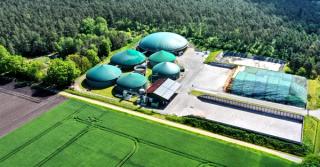
Powering the future of mining: Why haulage electrification matters
by Jasper Schrijvers , Matthew Hoare
View post

Welcome to the June 2024 edition of your Carbon and Energy Newsletter. We’re halfway through the year with plenty of legislation changes and deadlines to keep us on our toes. The TP6 stage of CCA data collection has drawn to a close which will now inform on the target setting for its future scheme across its sectors. DESNZ is consulting on the inclusion of Energy from Waste and GHG removals in the UK ETS. The ESOS reporting period is coming to a close, however CDP is now live and ramping up for companies to begin drafting responses to their new questionnaire. And finally, SBTi have released their new land vehicle guidance, along with a new integrated target submission forms for disclosures.
Met Office data shows spring 2024 was the warmest on record with a mean temperature of 9.37⁰C, up from a previous high of 9.12⁰C in 2017. This statistic is likely to come at a surprise, as recent weeks have provided dull and wet weather for most places across the UK. This is reflected in the fact that, despite the temperatures, we had the sixth wettest spring on record.
Following changes to the CCA scheme, new IT services are currently under development to manage the administration of agreements. These are still in progress, therefore an interim system of submitting Microsoft Word forms is being introduced to notify on:
Once published the forms will be available at: Climate change agreements: oeprations manual. The relevant form(s) should be submitted along with any requested evidence, (e.g. target calculator, 70% rule evaluation, site plans, descriptions, etc.), via email to:
ccatargetunit@environment-agency.gov.uk
Facilities should contact their CCA Helpdesk for any further support on administration of agreements.
Data collection for the Target Period 6 (TP6) extension has now drawn to a close. As this was a gap year it will only inform on the target setting for future schemes across the various sectors. The new six-year CCA scheme will follow the TP6 extension and incorporate changes following responses to previous consultations for improvements of the scheme. These were highlighted in our March 2024 newsletter.
As part of the changes, it is also worth noting DESNZ updated their statutory guidance on 1st May 2024. Its change relates to the closure of any facilities in bubbled agreements as an act of rationalisation and will keep the base year data for facilities in the target unit.
Consultation is currently in place seeking input on proposals for expanding the UK ETS to the waste sector and integrating greenhouse gas removals into the scheme.
The energy from waste consultation has been extended to close on the 2nd of August 2024. It is seeking opinions on the implementation of how waste incineration and energy from waste will be included in the scheme, with a proposed Monitoring, Reporting and Verification (MRV) only period commencing in 2026, and full scheme participation from 2028. A couple of key points to note are the proposal to include hazardous and clinical waste combustion within the scheme, and to exclude waste combustion sites from the current minimal thermal input threshold requirement of 20MW.
The intention for the scheme will be to capture facilities in the UK ETS that are performing energy recovery activities, or those that produce fuels for burning. However, this would not include facilities that recycle plastic waste into polymers and monomers, used as raw materials for products. A requirement to accelerate the deployment of Carbon Capture & Storage (CCS) in this area is also stated.
More information can be found at UK ETS trading scheme scope expansion.
The integration of Greenhouse Gas Removals (GGRs) into UK ETS consultation closes on 15th August 2024. It is taking into consideration engineered and nature-based GGRs, whilst reviewing a range of potential issues regarding permanence, costs and wider land management impacts. The two categories of GGRs are:
Nature-based approaches: such as afforestation, soil carbon sequestration and different types of land, coastal and marine habitation restoration.
Engineering-based approaches: such as Direct Air Carbon Capture and Storage (DACCS), Bioenergy with Carbon Capture and Storage (BECCS), wood in construction, biochar, and enhanced weathering
It is stated that the priority is to reduce emissions and use GGRs to mitigate remaining emissions that are unavoidable. It is proposed that the Authority will maintain the same overall gross cap on allowances, incorporating additional allowances generated from GGRs.
It is worth noting that only UK-based GGRs would be eligible for inclusion, with the earliest suggested feasible integration of GGRs into UK ETS being 2028.
A review of the current trends and costs associated with the UK ETS allowance show that prices are tracking at around £50/tonne. This demonstrates an increase from a previous downward trend since it spiked last year at the start of 2023. The EU allowance continues to be a different story, fluctuating at a slightly higher rate around €68/tonne. Further details on the UK Emissions Trading Scheme markets can be found at UK ETS trading scheme markets.
The Science Based Targets initiative (SBTi) has released updated guidance for land vehicles. The Guidance sets out the target-setting criteria and recommendations towards pledging the phase out of petrol and diesel vehicles by 2035. This includes a new method for automobile makers to set 1.5°C emission reduction targets.
It is also worthwhile noting that SBTi has updated their forms to provide a more integrated approach for disclosures. The target submission form now includes both near term and Net-Zero targets in one spreadsheet to improve the functionality.
CDP is now live, and companies should be in the process of drafting their responses to relevant modules of their questionnaire. The response window has altered this year opening on the 4th of June with a deadline for completion by the 18th of September.
For 2024 the questionnaire is updated to a single integrated format, meaning there will no longer be three separate disclosures for Climate, Water and Forests:
CDP's full corporate questionnaire includes additional 'sector-specific' questions for companies who operate in certain high-impact sectors. The plastics and biodiversity modules remain unscored for 2024. Companies should only complete sections of the questionnaire that are relevant to them.
A final change of relevance is an alignment of the CDP questionnaire with reporting frameworks and standards such as:
The deadline for ESOS has now expired (5th June). However, the Environment Agency and devolved administration regulators have stated they will not take any enforcement action, provided that an account was registered on the MESOS system by the 5th of June and the notification of compliance is submitted by 6th August 2024. It is recommended that eligible companies contact their lead assessors to ensure that they have all the information they require to complete any compliance reports. The planning of deadlines should account for sufficient time to upload the relevant data onto the MESOS system as this can be an arduous task.
To discuss any of the points above, or for support with your energy transition journey, speak to our carbon and energy experts.
Get in touch
by Jasper Schrijvers , Matthew Hoare

by Clodagh Connolly, Nicola Inge, Andres Schottlaender

by Michelle Gluck, Jim McKinley